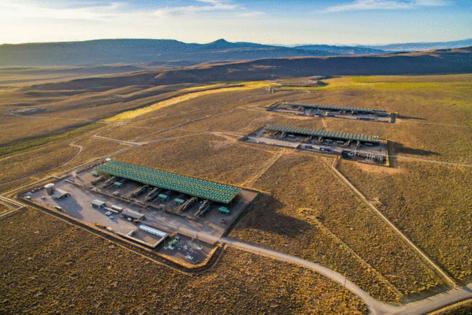Why Trump's 'energy dominance' executive order could be litigated in Nevada
Published in News & Features
LAS VEGAS — A Nevada geothermal giant could have waited years for its projects to get federal permits. Under President Donald Trump’s emergency executive order on energy, that process will take 14 days — at most.
Ormat, which has proposed three geothermal projects in rural Nevada, is one of the first energy companies in the country to make use of extremely expedited permitting, according to an Interior Department news release. The other is the Velvet-Wood uranium mine in Utah.
As of Thursday, the Bureau of Land Management’s database didn’t show project pages for two of the geothermal projects, and the other hasn’t posted any documents for public review.
“This initiative will significantly reduce delays without compromising the scientific rigor and environmental stewardship that are fundamental to our operations,” Ormat CEO Doron Blachar said in a statement on Monday. “By streamlining the review process, we can accelerate the development of reliable geothermal energy, which is crucial for national security and energy independence.”
But some say the timeline shows a disregard for the law mandating that environmental impacts be considered for projects on public lands. That’s the National Environmental Policy Act, or NEPA, which is a bedrock environmental law signed in 1970 by then-Republican President Richard Nixon — also the basis for most lawsuits brought by nonprofit groups.
Questions remain about how a 14-day environmental review would hold up in court if challenged, and whether the Trump administration could reasonably prove that an energy emergency exists in the U.S., said Bret Birdsong, a UNLV environmental law professor who served as the Interior Department’s deputy solicitor for land resources under the Obama administration.
“If I’m representing Ormat, I’m not necessarily chomping at the bit to be the test case of the 14-day NEPA process,” Birdsong said.
The death of NEPA?
Public comment periods and a thorough consideration of environmental impacts on public lands are required by NEPA, though no amount of time is specified in statute, Birdsong said.
The lengthy, public environmental impact statement preparation process, according to a 2024 Council on Environmental Quality audit, takes about 2.2 years on average.
“An environmental assessment is designed to answer the question: Will this project have significant impacts?” Birdsong said. “If the answer is no, then they say, ‘We’ve complied with the statute, and we don’t have to do the full-blown EIS.’ These timeframes are extremely tight, and they are outliers from historical practice. They’re likely to require agencies to cut corners that the courts are going to catch them on.”
The president does have broad authority to circumvent the NEPA process, said Frank Fritz, a UNLV law professor who was an attorney at the Environmental Protection Agency for nearly 2½ decades.
That’s especially true in times of emergency such as a natural disaster, Fritz said. But an energy emergency is much harder to prove.
“Maybe they need to rebuild during Hurricane Katrina, so we can’t go through a full analysis of endangered species and all the environmental impacts because people are dying,” Fritz said. “The question is: Is there an emergency of the magnitude that would allow you to use the emergency provisions in the Department of Interior’s regulations?”
No challenges planned, but a shift in approach
If there’s a legal challenge to a project on federal land in Nevada, usually it’s Patrick Donnelly of the Center for Biological Diversity who’s behind it.
While Donnelly said he has no intention of litigating against Ormat on these three projects, his organization will be involved in a lawsuit against the uranium mine in Utah that also is using the emergency regulations.
The whittling down of NEPA timelines, along with a May Supreme Court decision that vastly limited the scope of the law, has caused Donnelly to rethink what settled law to use as the basis of future lawsuits.
“They’re tearing down NEPA right in front of our eyes,” he said.
Donnelly and other environmentalists likely would have lost the lawsuit that stopped the Southern Nevada Water Authority’s Las Vegas pipeline from moving groundwater into the valley from eastern Nevada if that Supreme Court interpretation had existed, he said. The decision prevents environmental reviews from having to consider upstream and downstream impacts, rather solely focusing on direct effects of a project on public land.
Because of what’s happened to NEPA, environmental lawyers are evaluating whether it makes more sense to hang lawsuits on other, less frequently used laws, such as the Clean Air Act, the Clean Water Act and the National Historic Preservation Act, Donnelly said.
“NEPA can seem like such an arcane, pointless paperwork exercise to some people,” Donnelly said. “But NEPA is how we know whether a project is going to harm our air, water, wildlife and our well-being. It can seem like, ‘Oh, it’s just waiving or expediting some paperwork.’ But that paperwork is the only thing standing between us and a ruined environment.”
___
©2025 Las Vegas Review-Journal. Visit reviewjournal.com.. Distributed by Tribune Content Agency, LLC.







Comments